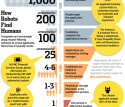Q. Do I still have to write a cover letter?
A. Yes, cover letters are still needed.
In today’s digital and much more casual world, many think cover letters are no longer necessary. Some research shows cover letters are not as important as they used to be. However, my advice is, ignore cover letters at your own risk!
Back when jobs were plentiful, applicants-per-opening fewer, and managers used letter openers instead of mouse-clicks, cover letters were essential. Cover letters served as your initial contact, your formal greeting, your firm handshake on paper. The cover letter invited the reader’s attention to you and your resume.
While the cover letter may not be the first impression anymore, they still are an essential part of the process today. Results of a recent survey of over 600 hiring managers and HR staff conducted by Creighton University revealed that: “applicants must use a cover letter.” Cover letters can be even more vital than ever, partly because fewer applicants are doing them, and doing them right! This fact gives you a competitive opportunity: writing a killer cover letter can make you stand out from the crowd of applicants.
Reasons to include a cover letter
1) Does the employer ask for a cover letter? If so, include it. Remember: if you’re applying for a job that’s been posted, you are competing with an average of 118 applicants. Put yourself in the shoes of the HR staffer for a moment. Imagine finding dozens and dozens of applications. Who do you think is going to get an interview–those who followed directions—or those who failed to follow directions? If the employer asks for one, be sure to include a cover letter! And make sure that it is well-researched and well-written.
2) Does any part of the job description require writing? In other words, will you be corresponding via email as part of your job? Then your writing skills are important and your cover letter demonstrates them. Include a cover letter.
3) What if a job posting does not specifically ask for a cover letter? What is important is to carefully read and follow directions. But look more closely. If you are given the option of a cover letter, why not include one? Out of those 118 applicants vying for the position, a certain number will not include in a cover letter simply because it is not asked for. A much smaller number will include a polite, courteous, creative, well-written, on-target, key-word rich cover letters. Into which group do you want to land? I would skip the cover letter if and only if the employer said specifically “do not include a cover letter” or “submit only a resume,” AND, if #2) above is negative.
In addition to following the standard conventions for cover letter writing as shown in our simple Anatomy of A Cover Letter (email us for a link to download it), what is important today is to tailor each cover letter specifically to the company and to the position you are seeking. Examine the posting for key words and use exactly the wording they use — same spellings and phraseology — in both your cover letter AND your resume.
What’s the big deal about key words?
Companies today use a digital sorting process called an Applicant Tracking System or ATS. Every time you upload your resume, it is being scanned by an ATS that searches for key word matches. It is estimated that roughly half of all resumes fail to pass the ATS scan. Even if you hand-deliver your resume, it will likely get scanned into the ATS.
Suppose you have worked in the health care field taking care of patients, and are now applying for a customer service position in another industry. The target job is seeking “customer care and service.” Yes, human beings know that “patient” is another word for “customer,” and “patient service” in essence equals “customer service.” But the ATS system is binary: does it match exactly, or not? If you don’t change the wording in your resume to “customer care and service,” it will wind up getting rejected by the ATS system, and never get seen by human eyes.
Using key words in the resume is key to passing the ATS scan; additionall using key words in the cover letter is advisable.
How to conduct research for your cover letter
Use Google, advanced search on LinkedIn, and good old fashioned networking to find people who work at the company you’re interested in. Ask for connections who work there. Get on the phone and make some phone calls. Get in the car and drive to the company.
Questions to answer in doing your research include:
- Who is the hiring manager for this position, and what is the correct spelling of their name? ALWAYS ALWAYS address letters to PEOPLE, not departments. What do you do with junk mail? And don’t just get the name of the HR person. Get the name of the hiring manager. Call, introduce yourself to the receptionist, and ask politely, “My name is ___. Can you please tell me, who is the hiring manager for the ___ position? I am writing a cover letter and would like to address it properly. What is the correct spelling of their name?” Be thankful and courteous. “Thank you so much. I’ve heard good things about this company and I really appreciate your help.” If the receptionist is receptive, go ahead and ask: “Is there any way I could please speak to him or her, to confirm the position opening, and introduce myself? I promise to be very brief.” Be polite. Making friends with receptionists is always a good idea. Get the name at a minimum. .
- Another tack to take is to ask for an informational interview with the hiring manager. Explain that you’re doing independent research on a topic in your field, and would like 5 minutes of his or her time to ask a few questions. Try for an in-person interview, if possible. The more personal the contact the better.
- Schedule informational interviews, or drop off resumes, just before lunchtime. When you get to the office, take a look around. Are people friendly, smiling, relaxed, and going out to lunch? Or are they tense, crabby, sitting hunched over, and eating at their desks? If the latter, is that ok with you? If there is an opening in the company, inquire politely about what happened to the last person who filled this position. Why is the position open? How many different people have filled this position in the past few years? What is it like working there? How’s the turnover rate? How do people like working there?
- What is the color, look, feel, and style of the corporate brochures, logo, etc? Change your resume to match to match the corporate colors. This is subliminal and can be highly effective. You are professing that you fit their mold, so demonstrate that fact, right up front, as part of your first impression.
- How is the company doing financially? If it is a publicly traded company, this information is available online. If privately held, research articles written about the company in local media.
- What is the mission of the company? (See their website.) How are they doing, in achieving that mission? What kinds of customer reviews do their products receive?
- What are the challenges being faced by the company today? Who are their competitors? How does the company stack up in the field? What makes them stand apart? What are customers saying about them? Read their posts on Facebook and Twitter. Write down any ideas for how you could help solve these problems. What skills would you use to help?
- What are the challenges being faced by the specific department you’re going into? What are the challenges of the specific position within that department? Likewise, note ideas and the skills you would use to help.
- As you look through your notes about the company, think about what’s missing. What information can you not find? What would you like to ask them? Jot down any questions you may have.
Equip yourself with the answers to these questions BEFORE you write your cover letter, and before you get interviewed, and you’ll definitely come out ahead of your competition!









Recent Comments